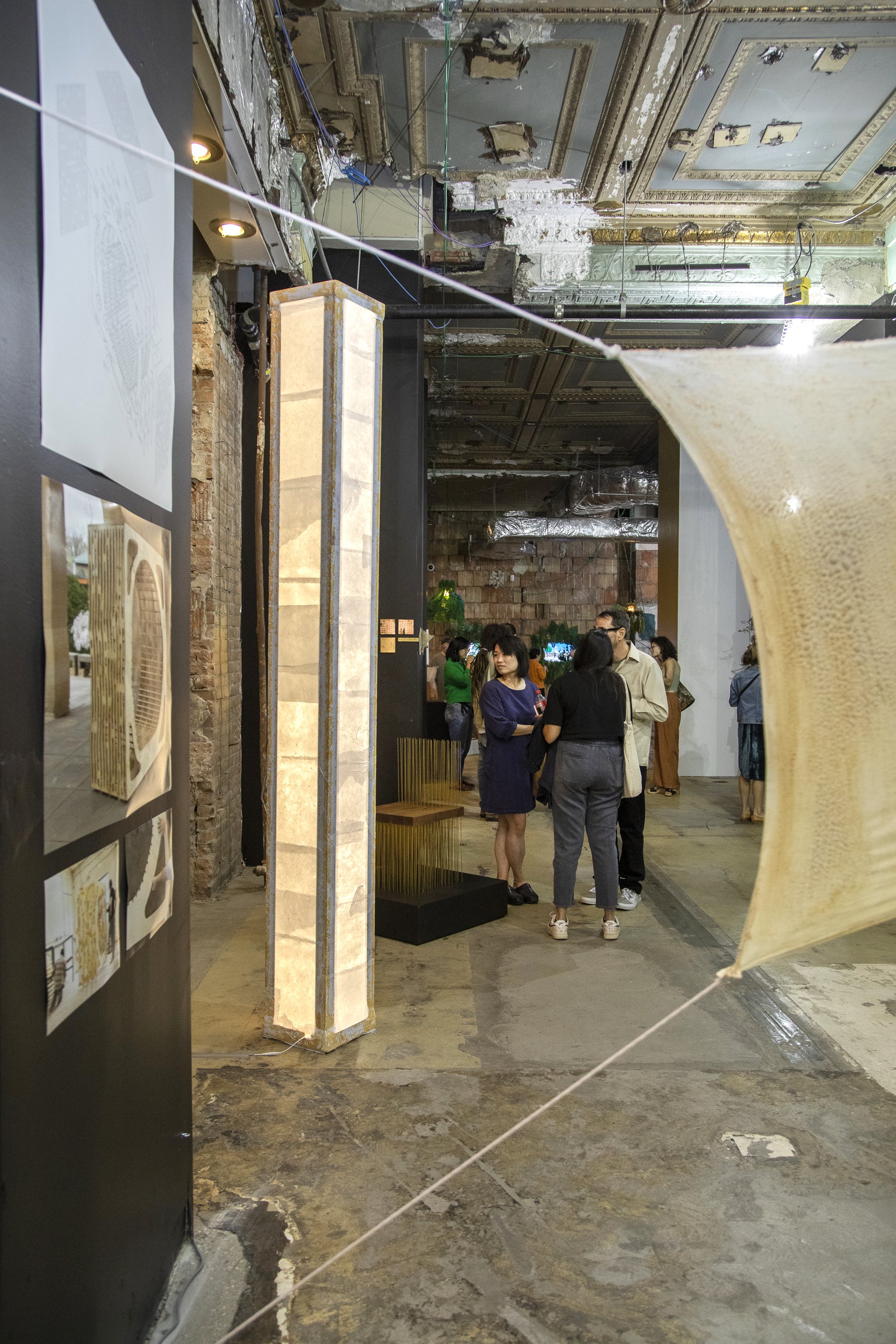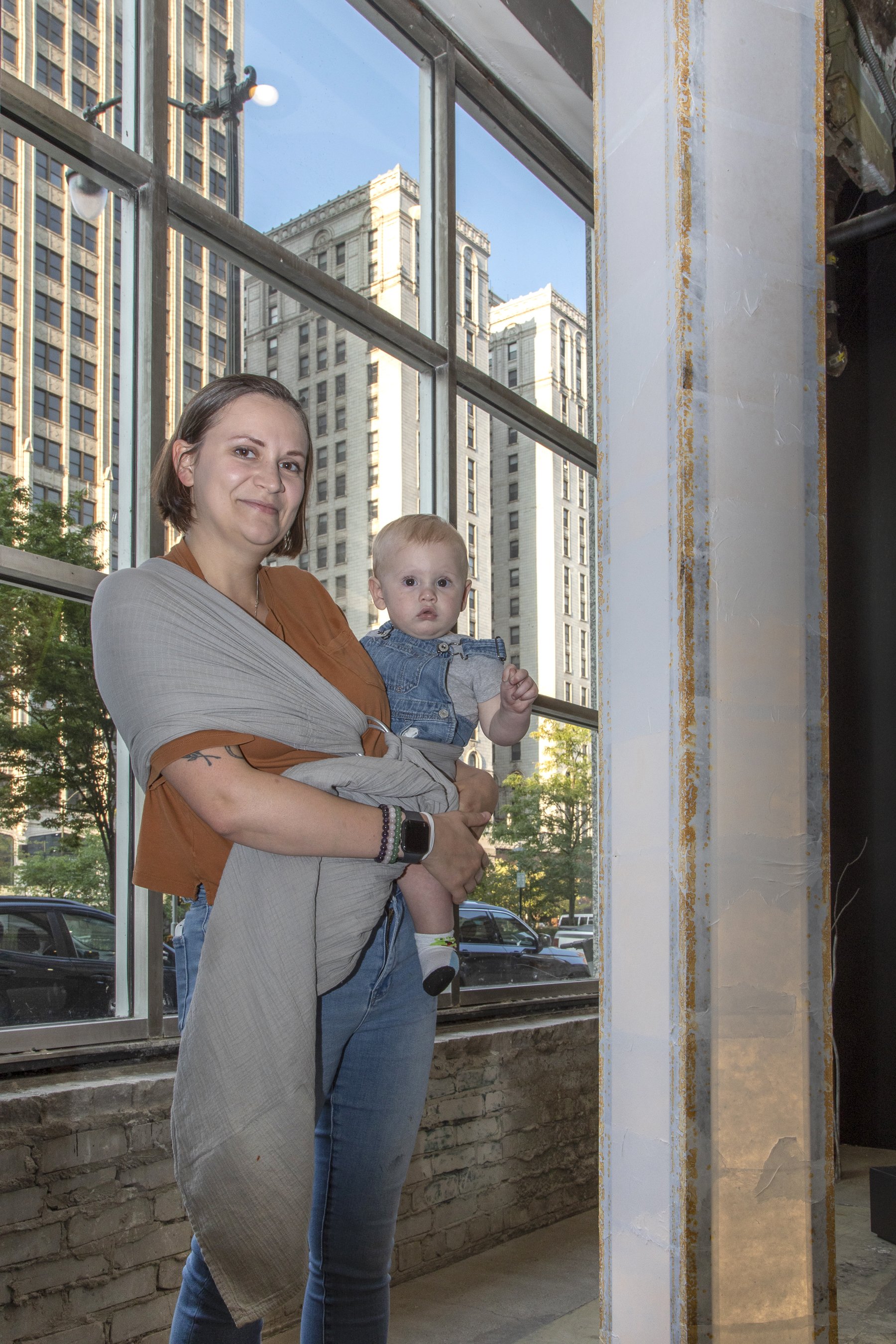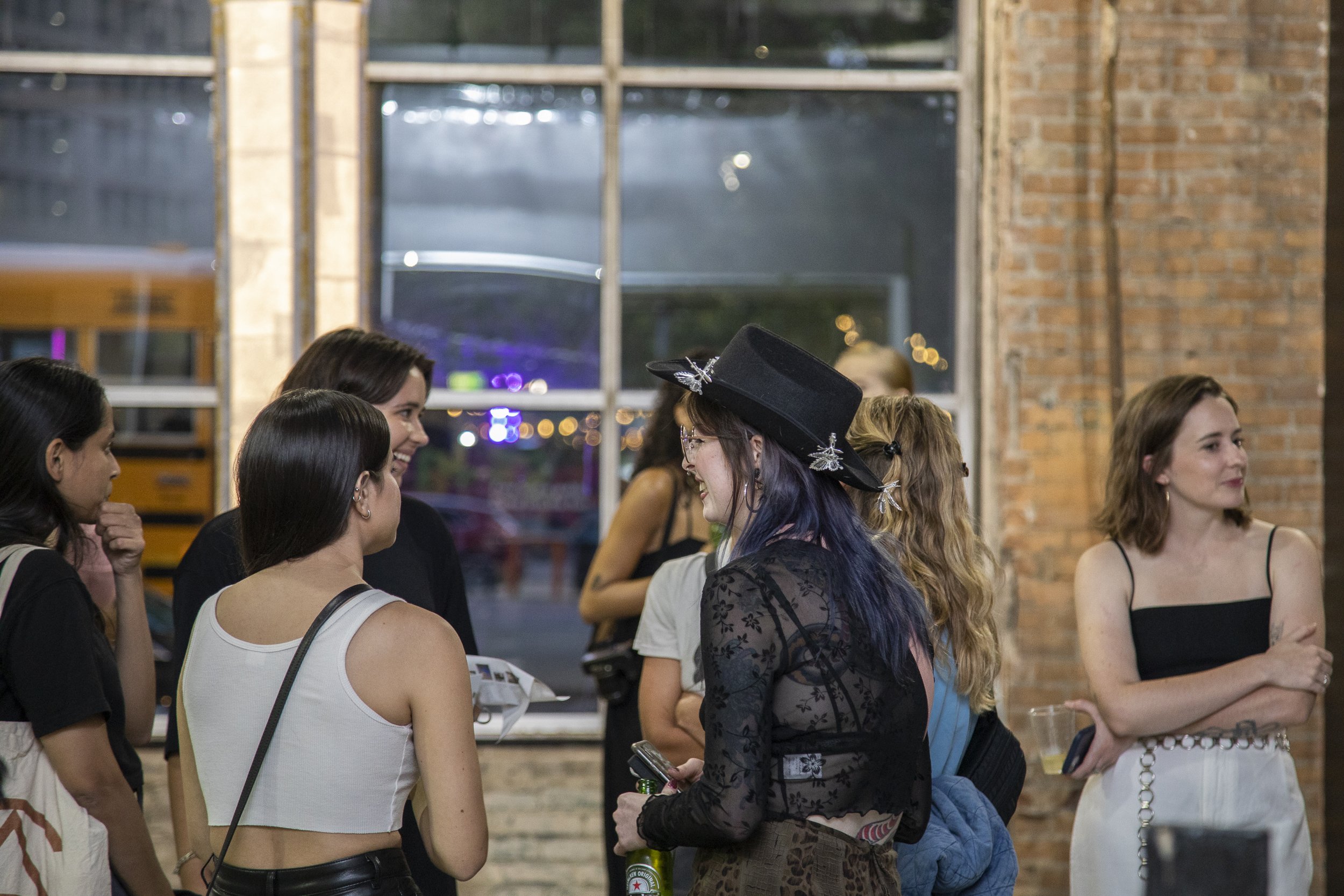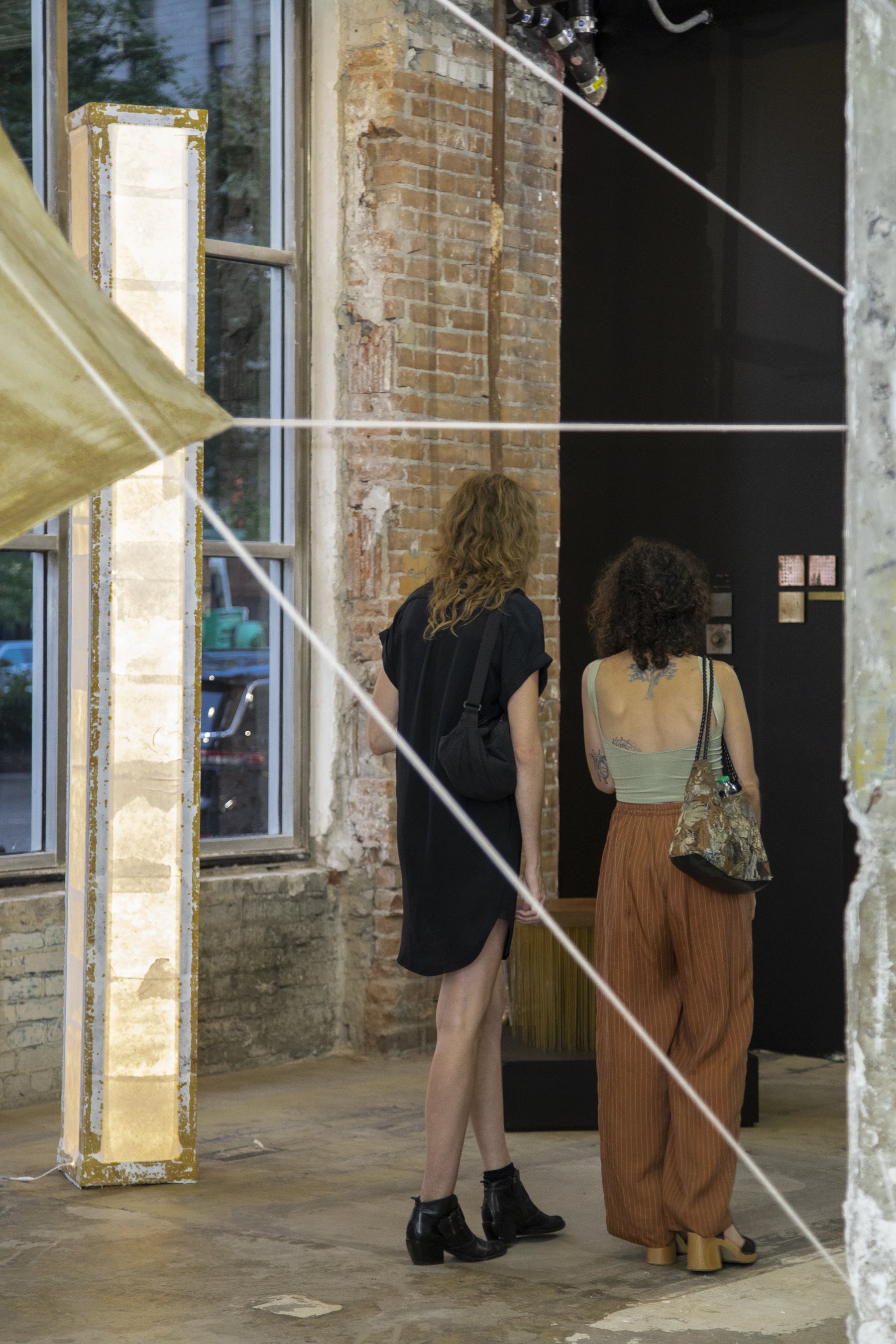images by PD Rearick
M C
September 2022
This column of light is a continuation of a series of works binding the fragile beauty of handmade paper tightly with the cold harshness of steel. This molding of nature to fit in with industry represents the dichotomous relationship between the manmade and nature: nature must often be violently altered in order to fit into the format of the industrial. At the same time, manmade structures are eventually swallowed up by nature, as can be seen in still-radioactive Chernobyl teeming with green overgrowth and the hauntingly beautiful abandoned structures along Woodward in nearby Highland Park and scattered throughout the city of Detroit.
Like the first part of this dichotomy, the cotton used as the fiber for this paper must be beaten to a pulp for hours in order to be formed into delicate sheets of paper. However, to bind it to the steel, the artist must use water, triggering the rusting process in the steel and ultimately this much stronger material’s demise. The paper is tightly bound to this industrial frame, but it will eventually win out if nature is allowed to take its natural course.
The shape of this work, a column, speaks to ancient origins: the human desire to use nature’s shapes and materials, originally the literal trunk of a tree, to support structures meant to serve human needs. This column does not serve this purpose physically, however. Instead, it supports its environment through illumination. The artist, a new mother, is inspired by this concept and hopes to do the same for her son while contemplating the complex history of this architectural trope.
“The loving mother teaches the child to walk alone. She is far enough from him so that she cannot actually support him, but she holds out her arms to him. She imitates his movements, and if he totters, she swiftly bends as if to seize him, so that the child might believe he is not walking alone… And yet, she does more. Her face beckons like a reward, an encouragement. Thus, the child walks alone with his eyes fixed on his mother’s face, not on the difficulties in his way. He supports himself by the arms that do not hold him and constantly strives towards the refuge in his mother’s embrace, little suspecting that in the very same moment that he is emphasizing his need for her, he is proving that he can do without her, because he is walking alone.” (Soren Kierkegaard)
MANY thanks to Griffin Davis for fabricating the steel structure on which the paper is stretched, and Megan Heeres for opening her studio for processing the pulp and making the paper covering this piece (and lending her paper making expertise!).






